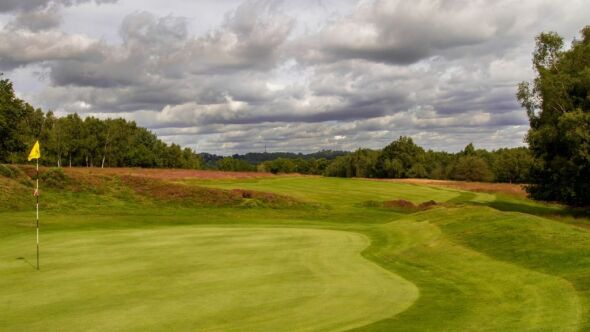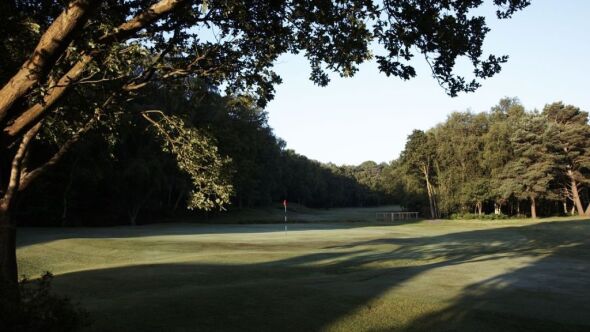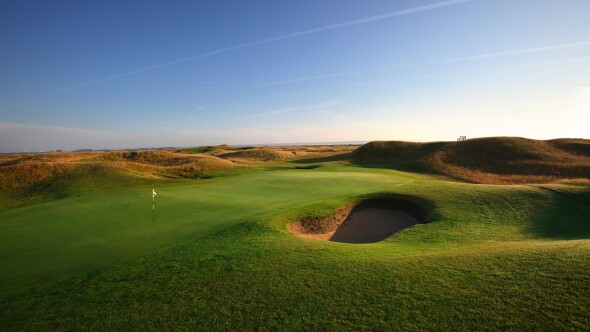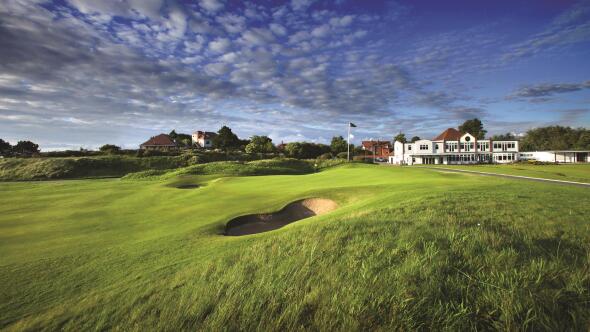Crowborough Beacon Golf Club

About
| Tee | Par | Length | Rating | Slope |
|---|---|---|---|---|
| White | 71 | 6319 yards | 70.8 | 133 |
| Yellow | 71 | 6031 yards | 69.5 | 128 |
| Yellow (W) | 73 | 6031 yards | 75.9 | 137 |
| Red (W) | 73 | 5532 yards | 72.6 | 129 |
| Red | 71 | 5532 yards | 67.2 | 115 |
| Blue | 68 | 5039 yards | 65.3 | 109 |
| Blue (W) | 71 | 5039 yards | 69.9 | 121 |
| Hole | 1 | 2 | 3 | 4 | 5 | 6 | 7 | 8 | 9 | Out | 10 | 11 | 12 | 13 | 14 | 15 | 16 | 17 | 18 | In | Total |
|---|---|---|---|---|---|---|---|---|---|---|---|---|---|---|---|---|---|---|---|---|---|
| White M: 70.8/133 | 406 | 449 | 147 | 369 | 356 | 191 | 507 | 329 | 395 | 3149 | 495 | 325 | 414 | 141 | 498 | 366 | 343 | 145 | 443 | 3170 | 6319 |
| Yellow M: 69.5/128 W: 75.9/137 | 378 | 428 | 138 | 344 | 323 | 167 | 493 | 314 | 382 | 2967 | 480 | 318 | 403 | 129 | 478 | 356 | 330 | 134 | 436 | 3064 | 6031 |
| Red M: 67.2/115 W: 72.6/129 | 349 | 408 | 111 | 331 | 281 | 156 | 447 | 225 | 369 | 2677 | 414 | 306 | 393 | 118 | 444 | 342 | 304 | 123 | 411 | 2855 | 5532 |
| Handicap | 9 | 1 | 15 | 17 | 3 | 11 | 7 | 13 | 5 | 8 | 14 | 2 | 18 | 10 | 6 | 12 | 16 | 4 | |||
| Par | 4 | 4 | 3 | 4 | 4 | 3 | 5 | 4 | 4 | 35 | 5 | 4 | 4 | 3 | 5 | 4 | 4 | 3 | 4 | 36 | 71 |
| Handicap (W) | 7 | 13 | 15 | 11 | 5 | 9 | 1 | 17 | 3 | 14 | 8 | 2 | 16 | 6 | 4 | 10 | 18 | 12 |
Course Details
Rentals/Services
Practice/Instruction
Policies
Food & Beverage
Bar, RestaurantAvailable Facilities
ClubhouseReviews
Cheated
Beautiful course setting , views , layout , paid £50 to play from farmers field fairways , also denied club facilities , £25 seems a fair figure given the appalling fairways and 0 club amenities .
I was going to book a 50 strong society day there , but we need to wash and freshen up after , maybe in 5 years if they sort the place out
First impressions were mixed. A nice view yet the practice green and course at first sight looked messy. . I’m putting this down to the changing of seasons.
Off to a nice start with the first, striggt yet trouble both sides and a hard slopped green. Second hole which is muchly spoken off is very nice, yet the right shot shape and run around the corner makes it nothing more than amazing than any other hole, I think it’s overrated and there are other holes on the course which offer a better challenge.
Coming to the 6th, this hole will test your accuracy as it’s all carry on a wet day and offers a small green as do many of the holes on this course. Placing the ball on the green is your best bet instead of fireing at every flag as a slightly poor shot can turn into a bogey if not carful.
The back nine is more forgettable yet hosts some very good holes from 12-16..good drives are a must and trouble around the geeens really make for a challenge.
Overall the course is great, maybe overhyped some what due to the conditions of the greens I had on the day and not so clean tee off boxes but the lay out offers some of the best golf you can play in Sussex. Only wish they put some fairway bunkers in and trimmed down the rough around the greens to create some run off areas as getting up and down from around the greens doesn’t provide a huge challenge if your chipping is decent.
Nice course
Nice course
Good pace of play
Nice fairways
Greens could have been better
good coarse
crowborough beacon is a challenging coarse with some brilliant hole, with doglegs, hills and trees to keep you awake, thats not to mention the heather.
the green where reasonable but had been worked on recently so will only get better. the tees where quite good accept the last.
very friendly pro as was everyone we spoke to, if your not use to walking take a buggy.
the views are stunning from. most holes
Really enjoyed the round. The course is beautiful with stunning views on many holes. Course in good nick although some of the greens could be improved.
























